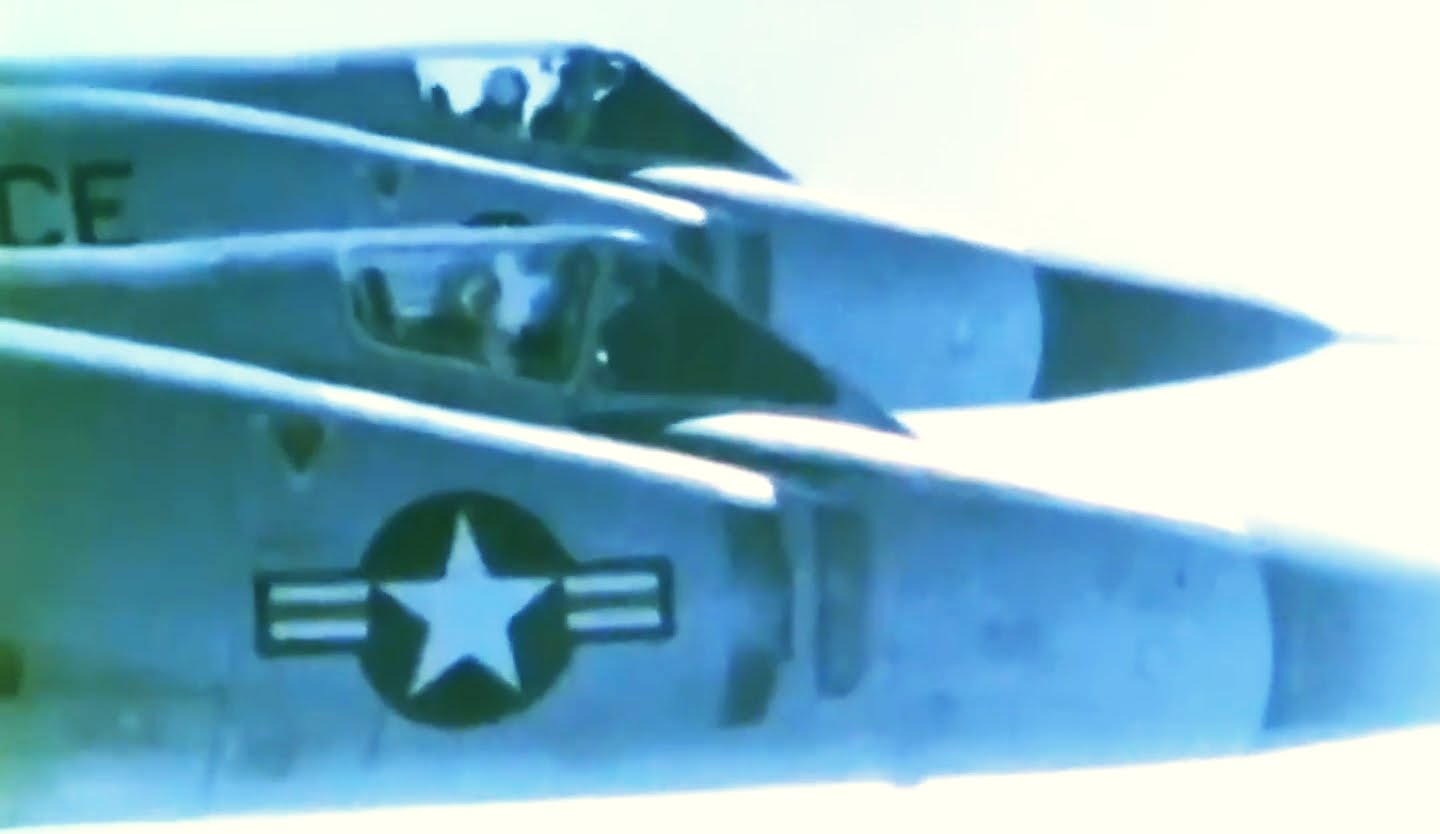Strategic Air Command & Tactical Air Command playlist:
more at:
“Describes the arctic mission of the Air Defense Command and pictures its space detection and tracking facilities. Acknowledging the roles of Canadian, Swedish, and English personnel in North American detection operations, the film demonstrates a typical scramble to intercept unidentified aircraft.”
Public domain film from the US National Archives, slightly cropped to remove uneven edges, with the aspect ratio corrected, and one-pass brightness-contrast-color correction & mild video noise reduction applied.
The soundtrack was also processed with volume normalization, noise reduction, clipping reduction, and/or equalization (the resulting sound, though not perfect, is far less noisy than the original).
Aerospace Defense Command was a major command of the United States Air Forces, responsible for continental air defence. It was activated in 1968 and disbanded in 1980. Its predecessor, Air Defense Command, was established in 1946, briefly inactivated in 1950, reactivated in 1951, and then redesignated Aerospace rather than Air in 1968. Its mission was to provide air defense of the Continental United States (CONUS). It directly controlled all active measures, and was tasked to coordinate all passive means of air defense…
The RCA 474L Ballistic Missile Early Warning System (BMEWS, “474L System”, Project 474L) was a USAF “Big L” Cold War system of radar, computer, and communications systems that included the first operational ballistic missile detection radar.[citation needed] The network of 12 radars for detecting “a mass ballistic missile attack launched on northern approaches 15 to 25 minutes warning time” also provided Project Space Track satellite data (e.g., about 1/4 of SPADATS observations)…
BMEWS consisted of two types of radars and various computer and reporting systems to support them. The first type of radar consisted of very large, fixed rectangular partial-parabolic reflectors with two primary feed points. They produced two fan-like signals that allowed them to detect targets across a very wide horizontal front at two narrow vertical angles. These were used to provide wide-front coverage of missiles rising into their radar horizon, and by tracking them at two points as they climbed, enough information to determine their rough trajectory. The second type of radar was used for fine tracking of selected targets, and consisted of a very large steerable parabolic reflector under a large radome. These radars provided high-resolution angular and ranging information that was fed to a computer for rapid calculation of the probable impact points of the missile warheads. The systems were upgraded several times over their lifetime, replacing the mechanically scanned systems with phased-array radar that could perform both roles at the same time…
The Distant Early Warning Line, also known as the DEW Line or Early Warning Line, was a system of radar stations in the far northern Arctic region of Canada, with additional stations along the North Coast and Aleutian Islands of Alaska, in addition to the Faroe Islands, Greenland, and Iceland. It was set up to detect incoming Soviet bombers during the Cold War, and provide early warning of any sea-and-land invasion.
The DEW Line was operational from 1957 to 1985 and it was the northernmost and most capable of three radar lines in Canada and Alaska; the joint Canadian-US Pinetree Line ran from Newfoundland to Vancouver Island, and the Mid-Canada Line ran somewhat north of this. Between 1988 and 1993, most stations were deactivated. Those that remained were upgraded as part of the new North Warning System…

